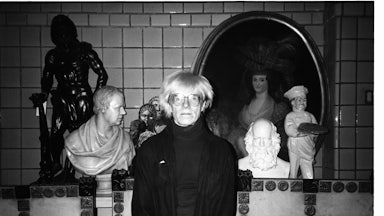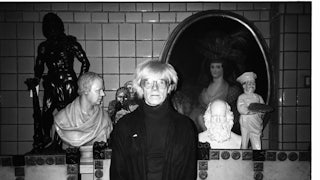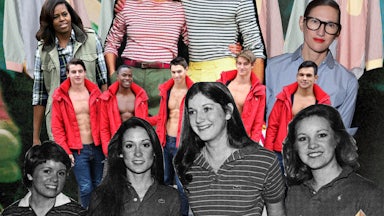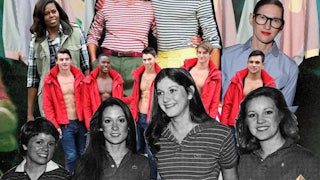The trial at the center of Zadie Smith’s new novel, The Fraud, has all the ingredients of a reckoning with Victorian Britain’s colonial wealth and the crimes upon which it rested. The year is 1869, and a butcher, Andrew Orton, purports to be Roger Tichborne, the heir to the Tichborne-Doughty fortune, who was long thought to be dead. The Tichborne Claimant is defended first by his mother, though she dies in the first few pages of The Fraud, and then by Andrew Bogle, former valet to another member of the Tichborne family and son of a former slave, who claims he recognizes the Claimant and in fact journeyed back with him to London on a ship.
Class and race collide and titillate the tabloid-reading public: a poor man laying claim to a great fortune, supported by the son of a slave. Among the fascinated readers is Sarah, the young fiancée of the novelist William Ainsworth. The daughter of a prostitute and “boot-black,” like many of her former class, Sarah is thrilled and fascinated by the trial; the idea that someone whose life looks and feels like hers did for most of her life might be laying claim to something more. “I tell you I believe Sir Roger,” she enthuses. “I am a thorough believer in him … he’ll … show them uppity Tichbornes and all their prejudiced lawyers a thing or two.” Meanwhile for William’s cousin Eliza, the trial reflects the absurdities of both sides: Illiterate Sarah’s assuredness is only slightly more laughable to Eliza than William and his daughters’ confidence that this interloper cannot possibly be one of them. “God help us all,” she says half-heartedly amid one of the many heated household arguments over the subject.
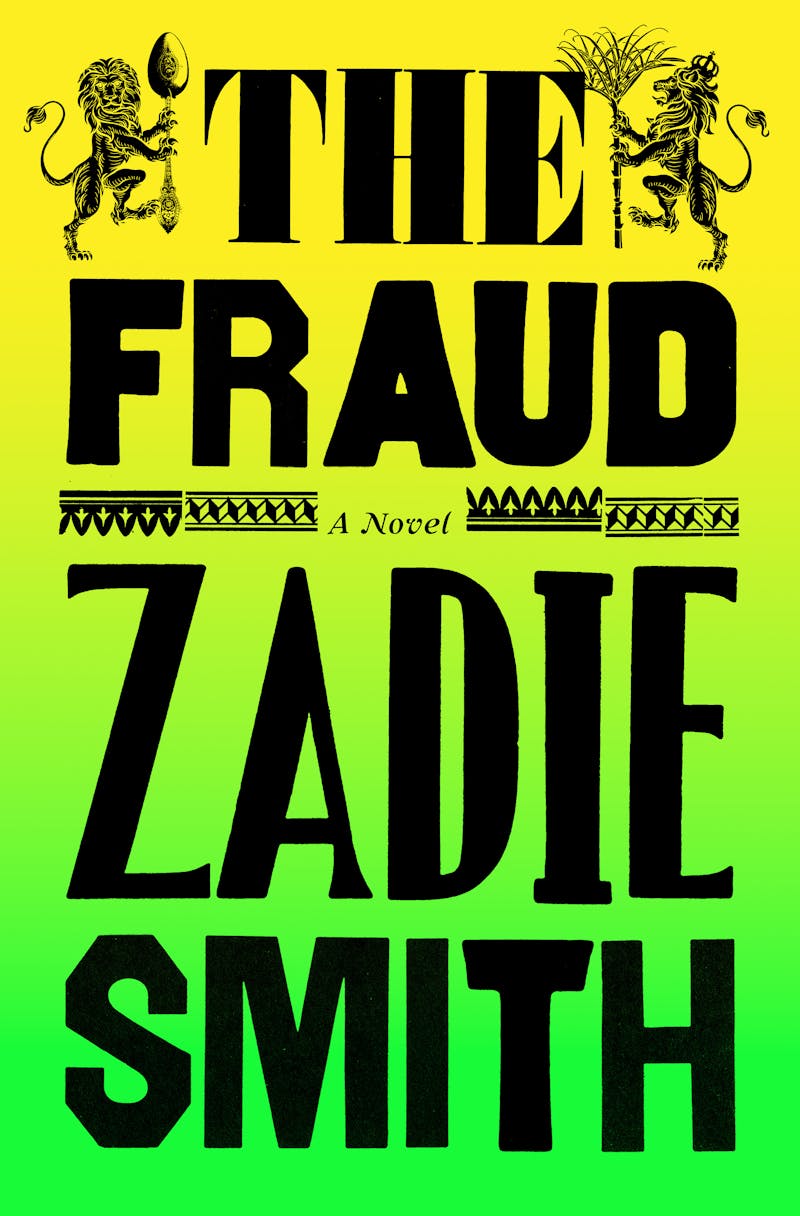
Each of Smith’s characters is wary of fakes, counterfeits, and illusions. Each, except perhaps Eliza, feels sure that they have access to their own truth. Andrew Orton might be a fraud, and maybe Bogle too. But what about the cruel swindle of the slave trade, and of imperial domination? And doesn’t the trial show, also, the absurdity of inherited titles and wealth? These systems of ordering our society might also be their own form of con. Closer to home, at least for Eliza, the frauds are novelists. Smith renders Ainsworth, as well as his contemporaries Dickens and Thackeray, as largely farcical. On Thackeray, Eliza says, “Strange man. Curious mix of bitter humour, envy and cowardice.” On Dickens, “Oh what does it matter what that man thinks of anything? He’s a novelist!”
This doubt—about the role of the novelist—is as much the center of Smith’s book as the trial. For several years, Smith has been grappling with the novel’s fraudulence. “It might well be that we simply don’t want or need novels like mine anymore,” she wrote in The New York Review of Books in 2019. “It may be that the whole category of what we used to call fiction is becoming lost to us.” The essay likens writing novels to colonialism, exploitation, and extraction: mining other people’s lives for one’s own profit. Who has the right to make things up—and to what end? Who has a right to hem in whom and at what cost? The Fraud picks up these questions, in a novel that is as much as an interrogation of storytelling as it is a story about the stories the characters tell in order to get by in Victorian London.
Smith launched her career as a writer of sprawling, densely populated novels, and The Fraud has a typically complex arrangement of central characters. Relationships in the Ainsworth household are a complicated web. Eliza is cousin by marriage to William Ainsworth. She was once in love with his now dead wife and is also William’s former lover (S and M was involved; Eliza was the wielder of the whip). She is now his housekeeper. Then there is Sarah, who dresses and acts like the maid of the house, and used to be, until she bore William a child. Sarah and William are now set to be married in a ceremony orchestrated by Eliza in the coming weeks.
Eliza is past middle age when we first meet her, far removed from almost all the major frictions of her earlier life. She’s wise and knowing, functioning mostly as the silent observer to the flaws and foibles of those around her, not least their farcical attempts at writing books. At the start of the novel, Ainsworth is “embarking on a novel ‘set partially in Jamaica,’” an island upon which he has never set foot. (“Yes, but Eliza, neither have I lived through the Restoration, or been a highwayman, or met Guy Fawkes,” he protests.) The result has only a short “postcard portrait” of the island, “buried under the weight of an entangling plot like a bobbin at the bottom of a sewing box.” When Eliza questions his use of Cant dialect in one of his novels, William assures her that while he’s never deigned to hear it spoken in real time, he has seen it used once in a book. “Eliza was quite sure this was not how it worked.”
These sections are charming, funny—sticky almost with the glee of knowing enough to find these Great Writers and their Great Work absurd—showing how much sharper Eliza is than near everyone around her, though they leave us without much access to whatever else she might be. We skim past her vulnerabilities and missteps, elide what might live beneath her “prickly” surface, as she stays distanced from the arch comedy of these early scenes.
As the trial gets going, Sarah is desperate to attend, and, shocking everyone, Eliza offers to function as her chaperone. Eliza is an abolitionist—who “signed old petitions, began new ones, sewed, baked and wrote letters to raise money for visiting American speakers,” and she focuses mostly on Bogle; a focus more intense even than her politics could explain. “Later, Eliza could never decide whether it was the influence of the crowd or some mysterious and mesmerizing aspect of Bogle that had worked upon her.… It seemed never in her life had she been more curious to hear a man speak.” She is enough of a skeptic to doubt that the court proceedings will explain what really happened: “Of all the places the truth may appear,” she thinks, “perhaps the least likely is the circus.” But she wants to know Bogle, who appears to her “a confoundment, like honesty itself.”
Much later in the novel, after the trial is closed, Eliza takes the surprisingly bold step of asking Bogle to lunch. And it’s here, in Bogle’s story, that the novel comes assuredly to life. We go back to 1770, and Bogle’s father’s boyhood on Hope Plantation, the inevitable loss and devastation. A different sort of life enters the novel; the parody falls away. Our attention is allowed to settle for long stretches; individual, paragraph-long scenes are stunning and affecting. We watch Bogle’s life shift constantly at the whims of his employers. One dies, another doesn’t like him, he’s sent away. He overhears Lady Tichborne refer to him as “that ape.” He buries wives and children. Whereas Smith’s mode of flitting from scene to scene without direction feels destabilizing earlier in the novel, here it becomes devastating, tense, lifelike. Bogle’s story, as it butts up against the trial’s murmurings and distractions, reflects the world back at us, but in a sharper, more coherent form.
The Claimant, by contrast with Bogle, is all empty bluster. I hate typing the word “Trump,” but he’s there in all of Orton’s bombast, more absurd even than the novelists. Two-hundred pounds heavier than the Roger Tichborne who left London, and with no recollection of the fluent French he once spoke, nor the education he supposedly received, “one saw at once that here was a man who moved as the wind moved. A man with no center, who might be nudged in any direction, depending.” If Bogle appears “impenetrable” to Eliza because of his depths, Orton appears “scandalously legible” to his crowd of supporters; everything is on the surface. “And what else is honesty—as the new Mrs Ainsworth liked to say—but a face what reads like an open book?”
After the first trip to the trial, and before Eliza and Bogle’s lunch, the book goes back in time to more talk of novelists, to drinks and parties, to more novelists’ absurdities. The men are rude to Eliza—some willing to sit next to her, but more happiest when she’s pouring them drinks. Scenes of untagged dialogue show bloviating painters, publishers, and writers. Ainsworth’s daughter Emily remembers Dickens because he gives her sugar cubes, claiming the one he keeps is for his horse, before eating it himself in front of her. If one of Smith’s concerns about the dangers of the novel is its tendency to tell tidy, too-neat little stories, these sections feel like an active attempt at unruliness. They’re told largely out of chronological order and lack many typical features of a novelistic narrative, the churn of tension or revelation. They feel instead like artfully built set pieces. They seem to flit around as if to create something atmospheric and not quite part of the novel, but they also attenuate the narrative investments that the book’s been building toward.
As Eliza and Sarah get deeper into the trial, Eliza becomes less interested in the truth of Orton’s claim than in her own sudden itch to write. “She had her paper and her pen and her inkpot and the timing was impeccable … she had known the giddiness of love, and the febrile sensations of hate and fear, but this feeling was different … an excitement of the blood that was yet under the total control of her mind.” It is a turn that makes sense intellectually. Eliza’s always been the sharp, quiet observer. The book is about novels after all.
Yet the parts of The Fraud that falter are not those that unfairly lay claim to someone else’s story but those that do not plunge far enough into another life. When Eliza, having taken in Bogle’s story, is moved to write it down, she has an epiphany:
All her life she had been trying to open a locked door. She had pushed as hard as she could upon it—using means both personal and metaphysical—in the belief that the door opened outwards, onto ultimate reality, and that this was a sight few people are ever granted in this lifetime—particularly if they happen to be born female. Now without any effort on her part, the door had come loose on its hinges. Finally, she could open it! But to her astonishment it opened inwards. She had been standing inside the very thing she’s been looking for.
Yet here is where the novel feels somewhat hollow: “the very thing she’s been looking for”? In its pages, The Fraud does not reach deep enough into Eliza to convey her seeking and her yearning, to build up a sense of what that might be. More precisely, the book does reach, sometimes, into Eliza, but it has its fingers in so many other, separate places that it is difficult for the reader to get purchase on those depths when they come.
In one of my favorite sections from Smith’s 2017 essay “Crazy They Call Me,” told as a direct address from the perspective of an imagined Billie Holliday, Smith says: “They never want to know about the surprise you feel in yourself … when something in the modulation of your throat leaps up, like a kid reaching for a rising balloon, except most kids miss while you catch it—yes, you catch it almost without expecting to—landing on an incidental note, a perfect addition, one you never put in that phrase before, and never heard anyone else do, and yet you can hear at once that it is perfection. Perfection!” It’s as good an articulation of artmaking, when, finally, it’s working, as I have read: a grasping, reaching, that through some inarticulable combination of thinking, feeling, trusting—sometimes ventriloquizing—you’re able to catch.
Included in her collection Feel Free, “Crazy” is accompanied by this explanatory asterisk: “I was asked to write an introductory essay for a book of Billie Holliday photos,” Smith writes. “I did try to write an essay about Billie, but every angle seemed too formal or cold. In the end, I opted for some form of ventriloquy instead.” One has this vision of Smith sifting through those photos, casting about for different angles, trying to bring what’s been said and seen before to new life. Finding, finally, the answer in this ventriloquism: unexpected, risky; reaching for and grasping that balloon. Yet it is when The Fraud reaches its emotional peak with Eliza’s epiphany that the book seems to crack under the weight of all its various interests, to succumb to its own uncertainty about the point of novels themselves.
A great novel gives you not just a rendering of the book’s characters and actions but a sort of subliminal accrual of ineffability—a subconscious sense that something ungraspable is being grasped at. Zadie Smith is absolutely a great novelist, but, in The Fraud, while there is much intricately rendered surface, and a crackling, thrilling intellect working through some fascinating questions, there is not quite enough trust in what the novel might still be able to contain.



